












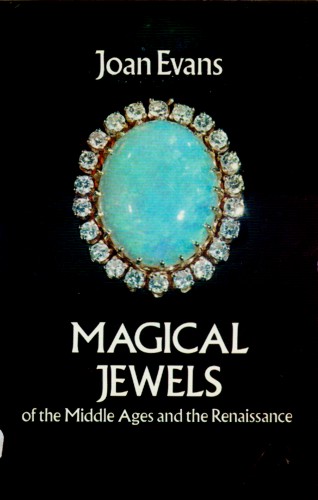
Magical Jewels of the Middle Ages and the Renaissance Particularly in England by Joan Evans.
NOTE: We have 75,000 books in our library, almost 10,000 different titles. Odds are we have other copies of this same title in varying conditions, some less expensive, some better condition. We might also have different editions as well (some paperback, some hardcover, oftentimes international editions). If you don’t see what you want, please contact us and ask. We’re happy to send you a summary of the differing conditions and prices we may have for the same title.
DESCRIPTION: Softcover. Publisher: Dover (1977). Pages: 264. Size: Size: 8½ x 5¾ inches. Summary: From time immemorial gems and stones have exerted a powerful attraction over much of mankind. Highly valued for their rarity and beauty, they have also been invested with many magical properties, not only medicinal virtues, but also such powers as the ability to make the wearer invisible, to repel poison, to increase riches, and to foster love between husband and wife. This book is a fascinating account of the belief in the magical powers of gems and jewels in Great Britain up to the end of the eighteenth century.
The author has examined nearly every lapidary of importance from the ancient world through the Renaissance and beyond, and she presents the fruits of her research on the lapidaries of Dioscorides, Pliny, Damigeron, Epiphanius, Marbode, Ibnu ‘l Baitar, Albertus Magnus, Camillus Leonardus, Anselmus Boetius de Boot, and more. The author covers related areas as well, bring in information on the influence of the Church, the growth of universities, medieval astrology, engraved gems, religious decorations, and so on. Quotations from the original sources appear throughout – in Latin, Greek, French and other languages. Also included are several Medieval Latin documents contained in the appendices.
Packed full of interesting lore, this book is a thorough, detailed study of the literature on magical jewels. Specialists will find this an enlightening book, while readers who have enjoyed the studies of herbal literature will find much of interest. This is an important book in an area that has been all too little explored. This is an unabridged republication of the original (1922) edition. Appendices: Index of Stones, Index of Proper Names, and General Index.
CONDITION: VERY GOOD. Unread oversized softcover. Dover (1977) 264 pages. Unblemished except for mild edge and corner shelf wear to the covers. Inside the book is pristine except that there is a small price tag on the back free page (the last blank, unprinted page in the book facing the underside of the back cove). Otherwise the pages are clean, crisp, unmarked, unmutilated, tightly bound, unambiguously unread. Shelfwear to the covewrs consists of faint cover crinkles, but no heavy creases. Aos back cover (which is/was white in color) is faintly age yellowed; and if you hold the book up to a light source and inspect it intently, you'll see that the flat surfaces of the front cover evidences faint scuffing and rubbing (yes, we're nitpicking). The freont cover is photo-finish, high-gloss dark green (almost black) and so shows rub marks very easily merely from being shelved between other books. Considering the book is a 40 year old paperback, condition is entirely consistent with new (albeit shelfworn) stock from a bookstore environment wherein new books might show minor signs of shelfwear, consequence of simply being shelved and re-shelved. Satisfaction unconditionally guaranteed. In stock, ready to ship. No disappointments, no excuses. PROMPT SHIPPING! HEAVILY PADDED, DAMAGE-FREE PACKAGING! 8659c.
PLEASE SEE DESCRIPTIONS AND IMAGES BELOW FOR DETAILED REVIEWS AND FOR PAGES OF PICTURES FROM INSIDE OF BOOK.
PLEASE SEE PUBLISHER, PROFESSIONAL, AND READER REVIEWS BELOW.
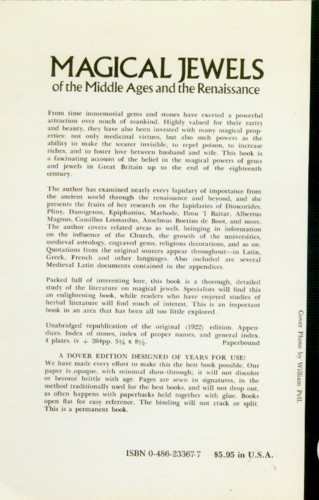
PUBLISHER REVIEWS:
REVIEW: Jewels and precious stones have held a fascination for people of all ages, but the stone symbolism that emerges in the Middle Ages goes beyond mere fascination. Stones had magical qualities, could protect against harm, and could even heal diseases. The symbolism of precious stones, like that of the other natural symbols--animals and plants--has a history which stretches back into classical and early Babylonian times. Even in early Old Testament times stones were significant and symbolic as seen in the twelve stones (representing the twelve tribes of Israel) which adorned the breastplate of the high priest.
In fact the tradition of the medieval lapidary--the book of stones--is a complicated one because it developed in several directions and with at least three different kinds of lapidaries: 1. the scientific lapidary 2. the magical or astrological lapidary and 3. the Christian symbolic lapidary. Instinctively we might say that the Christian symbolic lapidary is the significant one for our purposes, but to do so is to limit ourselves since the other kinds of lapidaries contributed greatly to its content.
The story really begins with the Babylonians who took the legends and beliefs associated for centuries with stones and incorporated them into their scientific knowledge. Because the Babylonians were very much attuned to the movement and influence of the stars and planets, the early stone lore reflects this astrological concern. In fact, a talisman was a very popular magical stone because it was believed to have special or magical powers derived from the heavens. The path of development that lapidaries took from their earliest Babylonian incarnation to the classical tradition is not entirely clear, but we do find early works on stones by Theophrastus, Dioscorides (5th book of Materia medica), and Pliny. Most of these early legends associated with stones were medical, including details on how the stones could be ground to powder and administered to a sick person.
Because the Christian Church condemned magic in all of its forms, it selected carefully the material it inherited from the classical period. It tried to ban the magical talisman, but it encouraged the medical associations of stone by copying and expanding them. Isidore of Seville faithfully preserves this classical material in the seventh century, and it is not until the 11th century in the writings of Marbode, the Bishop of Rennes, that we encounter the truly medieval lapidary. In addition to his great work, De lapidibus, Marbode also wrote three smaller lapidaries, one in verse and two in prose. The verse lapidary is a 99 line poem of thanksgiving for the twelve stones which constitute the foundation for the New Jerusalem. The stones are given symbolic significance. The Christian prose lapidary discusses the same stones but adds new material, and the medical lapidary focuses on the healing qualities of the stones.
It is the great lapidary of Marbode, however, which became the lapidary par excellence in the Middle Ages. Not only was this work extensive, covering 60 stones, but the descriptions are full, giving amazing accounts of the powers of gems to frighten off demons and create enchantments.
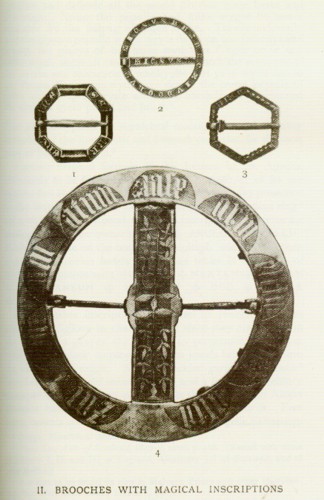
Sometime in the 13th century Christian thinkers seem to have considered the pagan nature of much of this material and set about to compose their own symbolic lapidaries based on the exegesis by early Church Fathers of stones in the Bible. The result of this endeavor is a whole tradition of lapidaries which focus on the twelve stones of Aaron's breastplate or on the twelve foundation stones of the New Jerusalem in the Apocalypse.
But the Church writers did not stop there. Lapidaries also exist which link the various orders of angels to particular gem stones and even one which assigns a stone to each of the apostles. Our modern tradition of birthstones has its antecedents in these apostolic stones as well as in the earlier tradition of the astrological influence of the stars. Stones were also associated with the Virgin Mary, and some stones were believed to have additional significance or power when they were inscribed by the names of saints or other religious scripts.
Because of the different nature of these lapidaries--ranging from medicinal qualities to correlations with the qualities of the apostles, there is often quite a range of meaning for these stones. From Marbode we learn that the sapphire (this may or may not be the stone we currently call sapphire.) protects the carrier from fraud and overcomes both envy and terror. Additionally, it allows one to escape from prison, reconciles a man to God, and stops perspiration. When ground with milk, it heals sores, cleans the eyes, and cures headaches. From the apostolic lapidary of Andreas, Bishop of Caesura, we discover that the sapphire is compared to the color of the heavens: "I conceive it to mean St. Paul, since he was caught up to the third heaven, where his souls was firmly fixed." And from a description of the twelve apocalyptic gems by Hrabanus Maurus (9th century), we learn that the sapphire represents celestial hope.
The ambiguity of stone symbolism poses some interesting questions when a gem assumes a symbolic role in a painting or piece of literature. As in the case of any symbol, context must be the key. In the second fitt of Sir Gawain and the Green Knight, as Gawain prepares to leave Arthur's court to search for the Green Knight, we are given an elaborate account of the dressing and arming of Gawain. Gawain believes his task will be a fierce physical battle against an opponent who has appeared earlier in the work to be magical and perhaps demonic. Among the other items that Gawain wears is a diamond. A quick look into the lapidaries helps to explain why he might wear a diamond rather than a stone that would correspond to his symbolic colors of gold and red. A diamond, we are told, protects the wearer from any foe and gives the wearer superior strength and courage--surely qualities Gawain would wish to have as he went to face the Green Knight. We also learn that the diamond could drive away spirits of the darkness and could repel difficult enemies. From Hildegard of Bingen we learn one other detail: the diamond possessed the power to ward off the devil himself.
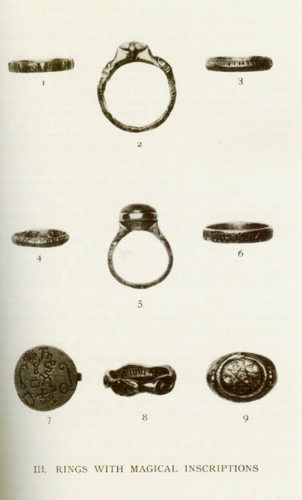
In light of the awesome and ambiguous description of the Green Knight in the opening fitt as a monstrous fay and in the 4th fitt as a demonic creature in the wilds, grinding his horrid axe, Gawain's wearing the diamond makes perfect sense, since Gawain surely felt he was going out to meet his death at the hands of some demonic monster.
REVIEW: TABLE OF CONTENTS:
Magical Jewels and Gems in the Ancient World.
The Earlier Christian Lapidaries.
Lapidaries of Spain and the Nearer East.
Western Mediaeval Lapidaries.
Medieval Popular Lapidaries.
Christian Symbolic Lapidaries.
Medieval Scientific Lapidaries.
Medieval Astrology: Lapidaries of Engraved Gems.
Magical Jewels of the Middle Ages.
The Renaissance: Lapidaries of the Sixteenth and Seventeenth Centuries.
Magical Jewels of the Renaissance.
The Age of Criticism: The Seventeenth and Eighteenth Centuries.
REVIEW:
PROFESSIONAL REVIEWS:
REVIEW: Sixteenth and seventeenth century sources reveal that precious stones served a number of important functions in ancient and medieval society. The beauty and rarity of certain precious stones made them ideal additions to fashion and dress of the day. These stones also served political purposes when flaunted as examples of a country‘s wealth, bestowed as favors, or even worn as a show of royal support.
Lapidaries and medical texts advised readers to use stones in myriad ways ranging from the subtle and common, to the bizarre and mystical. Stones and gems are excellent tools for studying diverse aspects of the cultural history of a society. A close examination of the gems people owned, how they were used, and what people thought about them reveals those circumstances and processes whereby an ordinary object becomes special or precious because of its investment with particular meanings and values.
From this cultural perspective, the precious stones provide a means to an end; a way to resurrect thoughts, feelings, emotions, and other intangible threads that once interwoven, bond together a rich comprehension of a society. An understanding of precious stones gives us a unique insight into the motivations, aspirations, fears, and dreams that embodied ancient and medieval society. “Magical Jewels” is an extraordinary and timeless treatise.
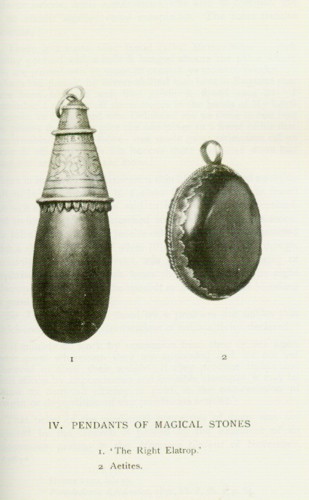
READER REVIEWS:
REVIEW: For anyone interested in the history of jewelry, this is a book not to be missed! There is symbolism and meaning behind past people's jewelry and gem choices, and without knowing their meaning, so much context is missed. I enjoyed reading this book cover to cover, and every time I look at a portrait I now understand more about the people in it, and what they are trying to convey to the viewer. This is a book that vastly expanded my understanding of medieval jewelry and I highly recommend it.
REVIEW: This book traces the general developments of lapidary manuscripts from the ancient world through the Renaissance. In general, the author succeeds in showing continuity as well as factors in development. Students of history and philology will probably find it interesting and useful. This work has become something of a classic in its field. I would certainly recommend it.
REVIEW: The book explains the history of "Magical Jewels" in Europe from Medieval age to the eighteen century.
I always ship books Media Mail in a padded mailer. This book is shipped FOR FREE via USPS INSURED media mail (“book rate”). All domestic shipments and most international shipments will include free USPS Delivery Confirmation (you might be able to update the status of your shipment on-line at the USPS Web Site) and free insurance coverage. A small percentage of international shipments may require an additional fee for tracking and/or delivery confirmation. If you are concerned about a little wear and tear to the book in transit, I would suggest a boxed shipment - it is an extra $1.00. Whether via padded mailer or box, we will give discounts for multiple purchases. International orders are welcome, but shipping costs are substantially higher.
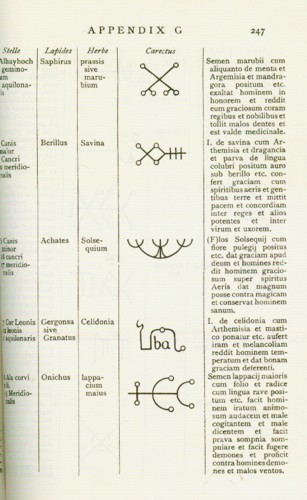
Most international orders cost an additional $12.99 to $33.99 for an insured shipment in a heavily padded mailer, and typically includes some form of rudimentary tracking and/or delivery confirmation (though for some countries, this is only available at additional cost). There is also a discount program which can cut postage costs by 50% to 75% if you’re buying about half-a-dozen books or more (5 kilos+). Rates and available services vary a bit from country to country. You can email or message me for a shipping cost quote, but I assure you they are as reasonable as USPS rates allow, and if it turns out the rate is too high for your pocketbook, we will cancel the sale at your request. ADDITIONAL PURCHASES do receive a VERY LARGE discount, typically about $5 per book (for each additional book after the first) so as to reward you for the economies of combined shipping/insurance costs. Your purchase will ordinarily be shipped within 48 hours of payment. We package as well as anyone in the business, with lots of protective padding and containers.
All of our shipments are sent via insured mail so as to comply with PayPal requirements. We do NOT recommend uninsured shipments, and expressly disclaim any responsibility for the loss of an uninsured shipment. Unfortunately the contents of parcels are easily “lost” or misdelivered by postal employees – even in the USA. That’s why all of our domestic shipments (and most international) shipments include a USPS delivery confirmation tag; or are trackable or traceable, and all shipments (international and domestic) are insured. We do offer U.S. Postal Service Priority Mail, Registered Mail, and Express Mail for both international and domestic shipments, as well United Parcel Service (UPS) and Federal Express (Fed-Ex). Please ask for a rate quotation. We will accept whatever payment method you are most comfortable with. If upon receipt of the item you are disappointed for any reason whatever, I offer a no questions asked return policy. Send it back, I will give you a complete refund of the purchase price (less our original shipping costs).
Most of the items I offer come from the collection of a family friend who was active in the field of Archaeology for over forty years. However many of the items also come from purchases I make in Eastern Europe, India, and from the Levant (Eastern Mediterranean/Near East) from various institutions and dealers. Though I have always had an interest in archaeology, my own academic background was in sociology and cultural anthropology. After my retirement however, I found myself drawn to archaeology as well. Aside from my own personal collection, I have made extensive and frequent additions of my own via purchases on Ebay (of course), as well as many purchases from both dealers and institutions throughout the world - but especially in the Near East and in Eastern Europe. I spend over half of my year out of the United States, and have spent much of my life either in India or Eastern Europe. In fact much of what we generate on Yahoo, Amazon and Ebay goes to support The Hermitage Museum in St. Petersburg, as well as some other worthy institutions in Europe connected with Anthropology and Archaeology.
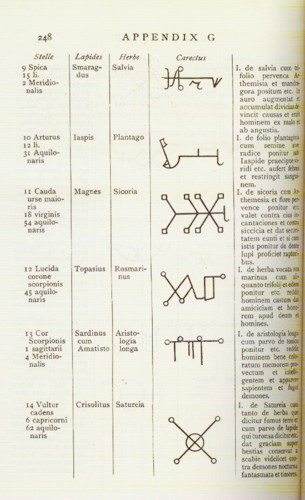
I acquire some small but interesting collections overseas from time-to-time, and have as well some duplicate items within my own collection which I occasionally decide to part with. Though I have a collection of ancient coins numbering in the tens of thousands, my primary interest is in ancient jewelry. My wife also is an active participant in the "business" of antique and ancient jewelry, and is from Russia. I would be happy to provide you with a certificate/guarantee of authenticity for any item you purchase from me. There is a $2 fee for mailing under separate cover. Whenever I am overseas I have made arrangements for purchases to be shipped out via domestic mail. If I am in the field, you may have to wait for a week or two for a COA to arrive via international air mail. But you can be sure your purchase will arrive properly packaged and promptly - even if I am absent. And when I am in a remote field location with merely a notebook computer, at times I am not able to access my email for a day or two, so be patient, I will always respond to every email. Please see our "ADDITIONAL TERMS OF SALE."

